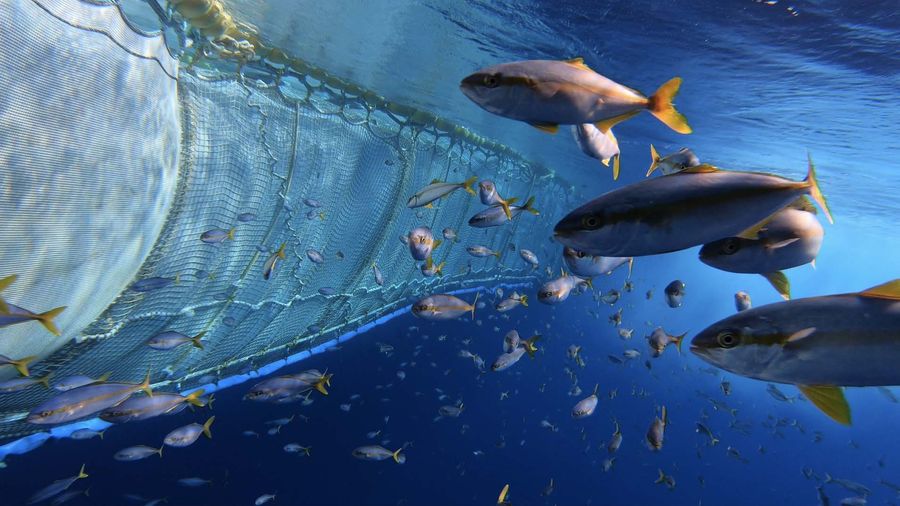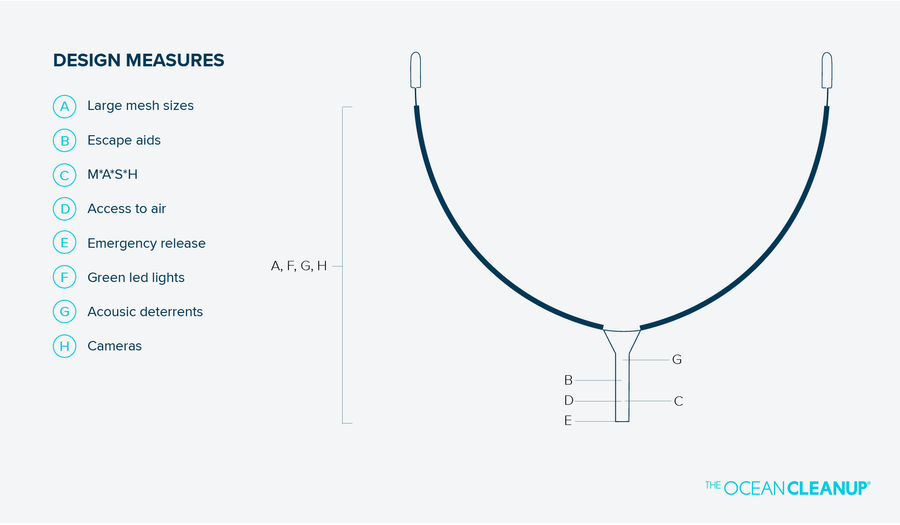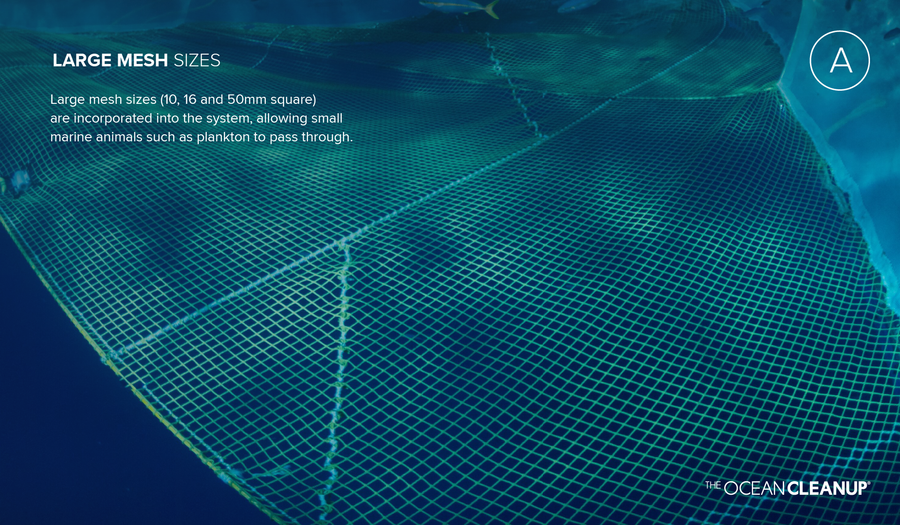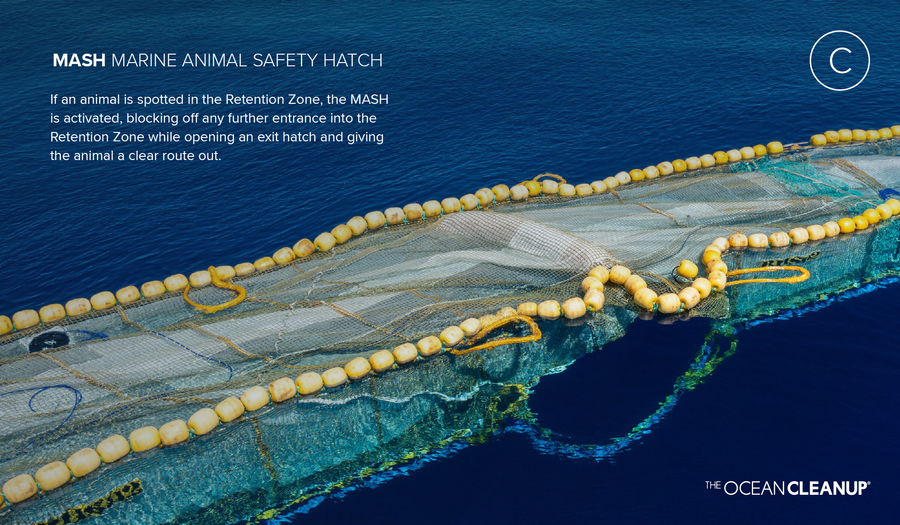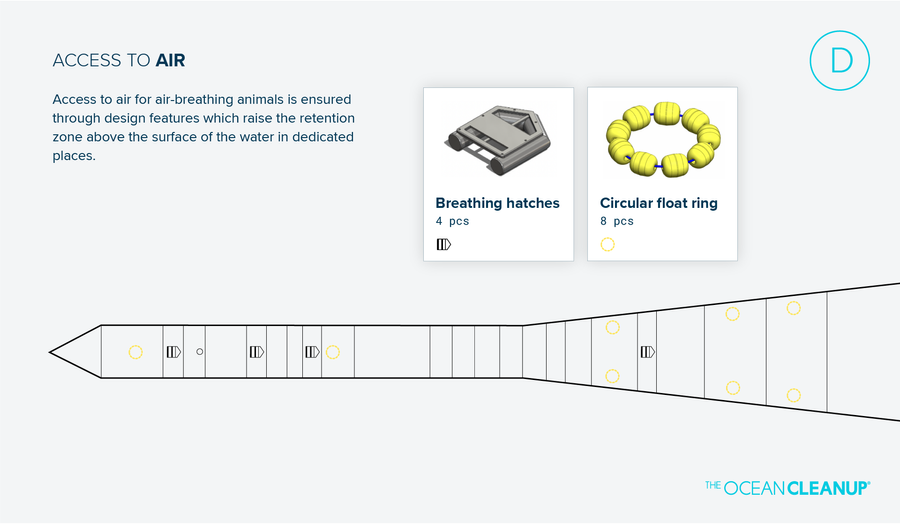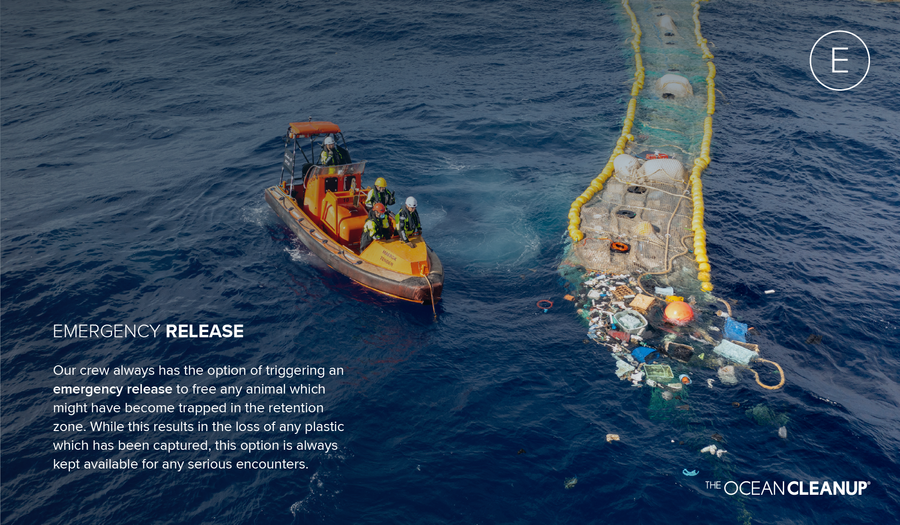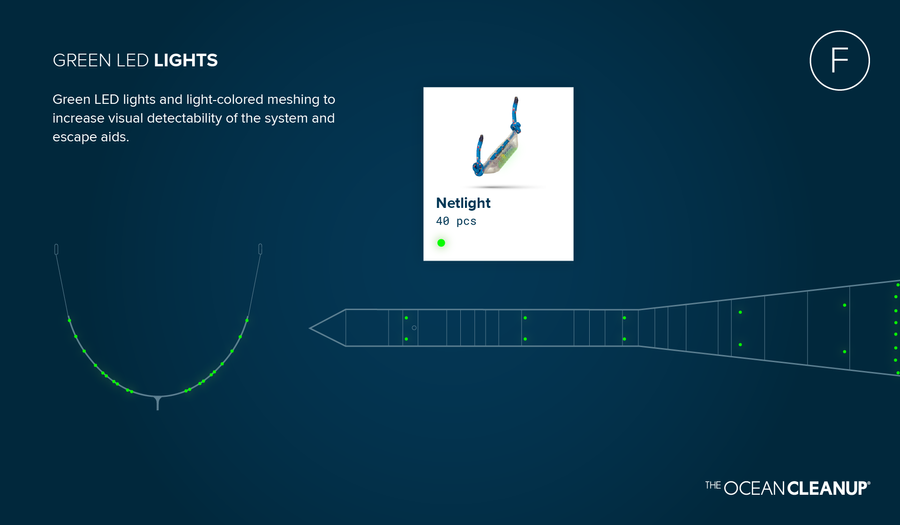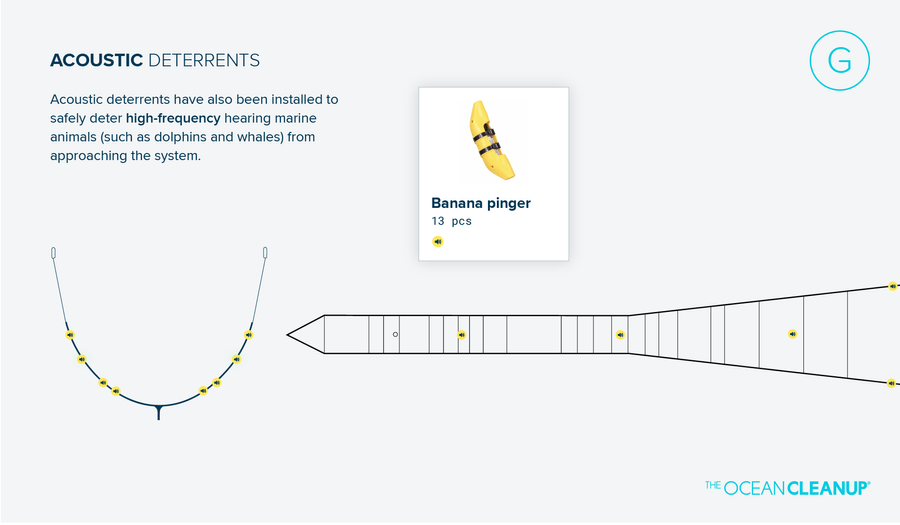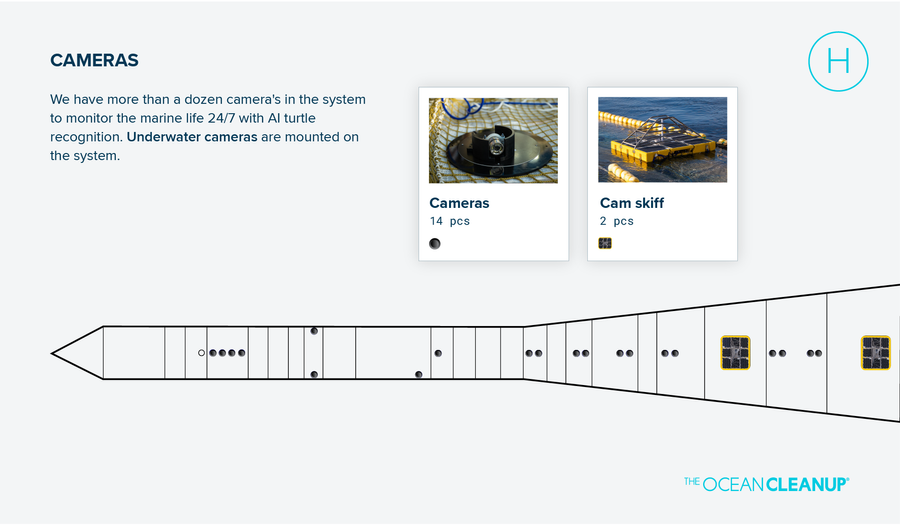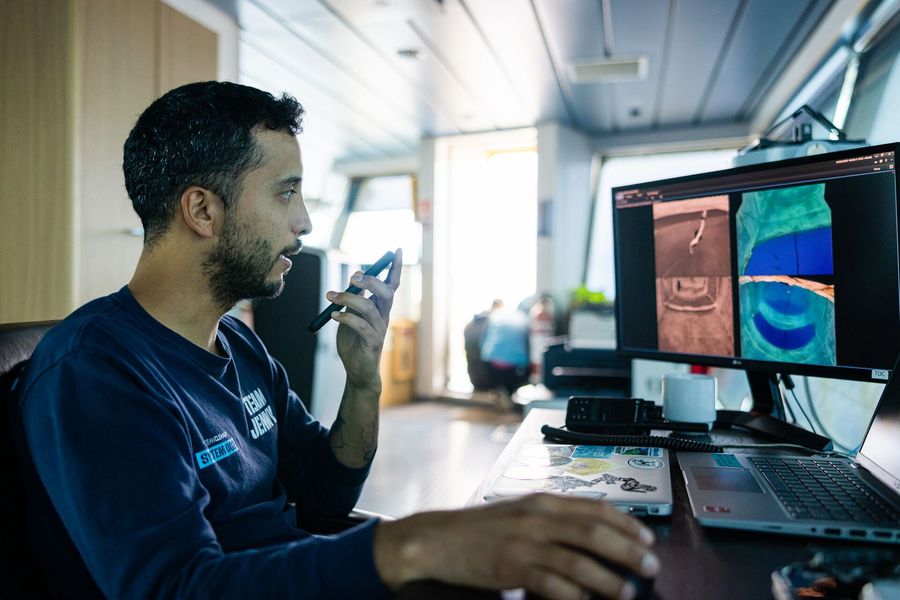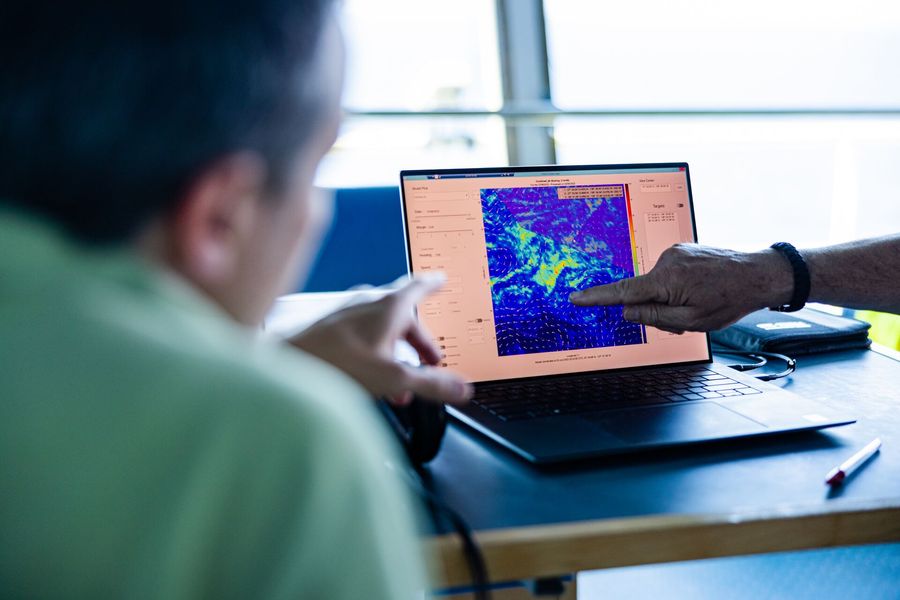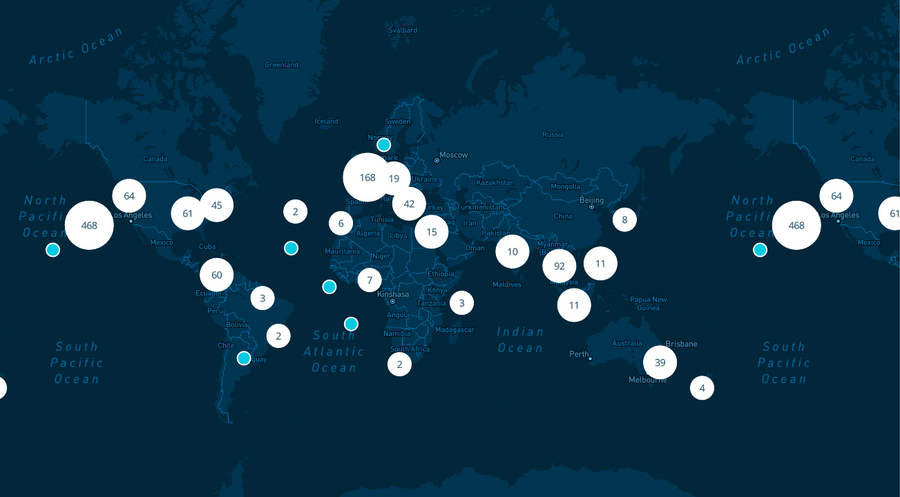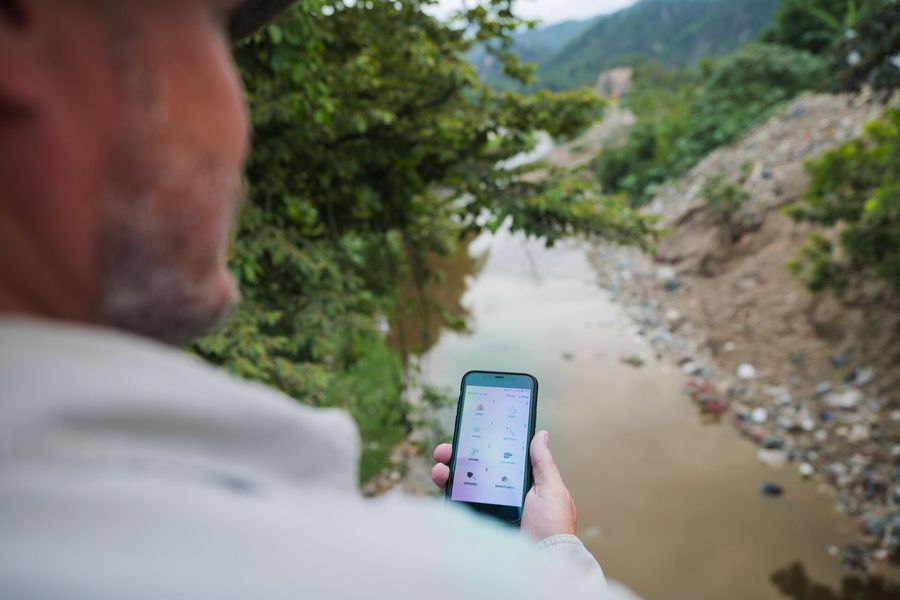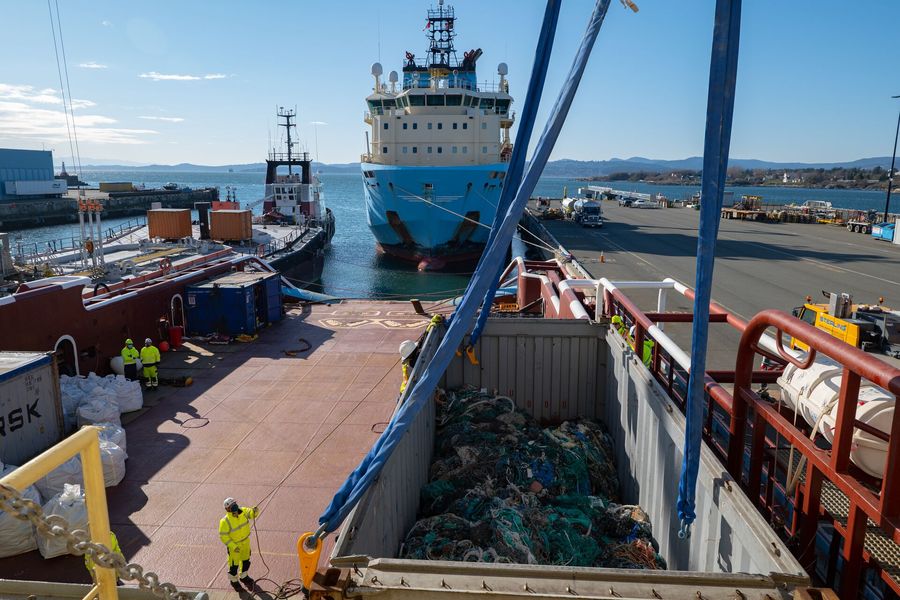
How We Ensure An Environmentally Sound Cleanup
Back to updatesSince our foundation over ten years ago, The Ocean Cleanup has closely followed and contributed to the latest science in our efforts to rid the oceans of plastic in an environmentally sound way. From design to deployment, expert recommendations and peer evaluations keep us transparent and accountable for our work. Here, we outline what this means across our operations, both in oceans and rivers, and how science drives our environmental mitigation.
WHAT MITIGATION MEANS
In simple terms, mitigation means trying to reduce any negative impact of our operations on the environment. People often think of mitigation in relation to our cleaning operations in the Great Pacific Garbage Patch (GPGP) – home to a host of wildlife, which must be studied and, where necessary, for whom we must innovate new ways to ensure our unique activities cause as little disturbance as possible. However, mitigation of any environmental harm is a top priority in all our cleaning operations: from System 03 in the GPGP to each of our Interceptor deployments in rivers around the world.
System 03, deployed to the GPGP in August 2023, is equipped with a range of deterrents and features to minimize the chances of harm to marine life. But our mitigation efforts are not limited to simply ensuring animals are physically unbothered by our cleaning systems; our approach to mitigation extends beyond this.
To ensure we maximize benefits not only to wildlife but to ecosystems, environments, and communities, our mitigation must align with the latest empirical data and embrace a holistic perspective. As well as learning from the best science on ocean plastic pollution and life in aquatic environments, we also contribute through our own research in this emerging field. Since our first peer-reviewed publication in 2015, we have shared our data and findings with the scientific community and the public through over 50 peer-reviewed and open-access publications.
Ensuring we follow the best available science of others, while contributing through our own experience and collaborative research studies results in better mitigation and a growing understanding of ocean plastic pollution and how to tackle it in the most responsible way.
IN ADVANCE: ENVIRONMENTAL (AND SOCIAL) IMPACT ASSESSMENT
We conduct an environmental impact assessment (EIA) before every new deployment of our technology in oceans and rivers, and continuously re-assess for every new iteration of our technology. In rivers, we conduct a comprehensive environmental and social impact assessment (ESIA), recognizing that social aspects form a crucial element of our operations on land. All impact assessments are based on recognized international standards.
As well as investigating the particular geography and wildlife in the area, the EIA considers any other potential adverse impact of our technology, such as whether materials or malfunctions may be dangerous or harmful to the environment and people. The EIA further sets out Environmental Management Plans that guide monitoring of our work and handling potential environmental emergencies.
Our decision to conduct EIAs for our ocean technology was initially a voluntary one, formalized in our 2018 Covenant with the Government of the Netherlands. By choosing to place our GPGP operation under government responsibility, we signed up to the highest levels of scrutiny and accountability – with the EIA and incidental catch reporting obligations as first steps. We are pleased to see that EIAs are increasingly required by law in other marine and riverine environments, and we hope to see this continue.
We collaborate with authorities, communities, and individuals to ensure that we understand their sensitivities or priorities, and make sure our operations work around them.
We also engage on a societal level, demonstrating the economic and social benefits of clean waters to those most affected by this pollution. Ongoing study and dialogue ensures that medium- and long-term effects are considered from all angles prior to deployment. This holistic approach gives us the best chance of tackling plastic pollution around the world while ensuring benefits at both global and local levels.
The pre-deployment EIAs and (ESIAs in rivers) identify areas where mitigation and monitoring of impacts are needed. Based on this, we develop environmental and social management plans specific to each technology deployment.
MINIMIZING INCIDENTAL CATCH
Any operation which involved significant levels of incidental catch (fish or other animals extracted from the water with the plastic) could have a serious harmful impact on the respective ecosystems. It has therefore always been a top priority for us to minimize incidental catch and other adverse interactions between organisms and our technology. Through our pre-deployment research we can identify which specific species may encounter our system, and design our technology with this in mind.
We have incorporated years of technical and scientific learning into our technology, and we continue to trial both existing and innovative solutions to ensure maximum benefits to the environment. You can view a selection of System 03’s mitigation features in the infographic below and learn more about how System 03 works here.
In the GPGP, our mitigation on incidental catch is not limited to design features. We also plan our operations to lower the possibilities of encountering wildlife. For example, we actively steer away from waters at certain temperatures throughout the GPGP, as these areas are known to contain loggerhead turtles. This is supplemented by our research in the field; the more we clean, the more we add to the knowledge of this species in this environment – knowledge that we share with the scientific community and researchers from the US National Oceanic and Atmospheric Administration (NOAA).
We are transparent in the documentation and reporting of incidental catch in our oceans operations. All specimens are recorded and documented by onboard marine biologists, allowing us to track our incidental catch rates over time, make adjustments to our system, and monitor improvements. Since our first ocean catch, we have tracked this data and we provide frequent updates on our performance (see the environmental updates in our various reports on System 002 here, here and here). Through this rigorous documentation and publication, accountability is guaranteed throughout our operations to minimize incidental catch. In rivers (which often contain minimal life in the areas we operate), we thoroughly investigate riverine life as well as impacts on downstream ecosystems (such as mangroves) as part of the EIA/ESIA and are currently gathering similar data on incidental catch in rivers.
MONITORING: TRANSPARENCY, ACCOUNTABILITY AND INSIGHT
Monitoring is a vital part of our mitigation efforts because it allows us to directly measure our impact and adjust our operations where we need to. Incidental catch is one vital part of our monitoring process, as described above, but equally important is our role in monitoring the ecosystem and plastic itself: how it enters waterways, how it moves once it is afloat, how it is impacting wildlife, and where it finally ends up. This information is not only vital for The Ocean Cleanup, but for all scientists and organizations interested in the health of our oceans.
The benefits of monitoring for our own operations are clear. For instance: plastic in the GPGP is constantly moving, which means it is not evenly spread throughout the area. Some areas contain less plastic, while some areas are dense with floating pollution: we call these areas hotspots.
By continuously monitoring how plastic moves, where these hotspots develop, and how this relates to densities of marine life, we can steer our cleaning vessels towards them, using less fuel and cleaning more plastic while sweeping a smaller area.
Our dedication to researching, recording and gathering data on plastic pollution and ecosystems throughout the world allows us to learn more about plastic behavior and impacts. However, it has another benefit: by measuring the quantities and composition of plastic and the health of key bioindicator species, we can monitor and give indications whether other anti-plastic pollution policies (such as plastic reduction schemes upstream) are having an effect.
We share our research findings with local partners and policymakers, aiding them in forming comprehensive strategies to combat plastic pollution. Our Interceptors are not just removing plastic from rivers and preventing it from reaching the oceans; they are also providing never-before-seen data on riverine plastic. Citizen Science plastic monitoring initiatives also allow people all over the world to get involved and help us gather data while raising awareness on the ground.
We are also engaging in long-term research projects with educational institutions around the world; monitoring with cameras and AI object recognition software, and contributing to local understanding of the plastic pollution problem. We conduct site-specific and species-focused research too; we monitor neuston before and after our system passes through to guide our mitigation efforts in the GPGP.
The scale of our monitoring is increasing, and new technologies allow us to process larger datasets with less resource drain. As plastic pollution becomes a pressing priority around the world, monitoring provides a valuable accountability and efficiency check to ensure that solutions are working effectively.
MANAGING OUR PLASTIC CATCH RESPONSIBLY
Our responsibilities do not end at the water’s edge. Once we have removed plastic from an ocean or river, we aim to ensure it never again returns to the environment. We aim to recycle as much of our GPGP plastic catch as possible.
From the moment of extraction, our GPGP plastic is subject to a certifiable Chain of Custody procedure, guaranteeing its authenticity as ‘ocean plastic’ throughout the value chain and allowing us to ensure the most sustainable options are chosen to give this plastic a new life.
This documentation also provides confidence to partners and eventually consumers that what they are purchasing is the real thing: ocean plastic, recovered responsibly from the GPGP.
In rivers, where extracted plastic is automatically the legal property of the local authorities, we focus during pre-deployment on identifying the best options for responsible waste management. Opportunities for recycling, reusing, or safe disposal are discussed, and networks are established with municipal partners and other local collaborators to ensure the local waste management infrastructure can develop alongside our interception operations.
AN ENVIRONMENTALLY SOUND CLEANUP IS ESSENTIAL
The Ocean Cleanup fully supports all recently-published scientific findings and recommendations and is committed to continuing to lead the world in environmentally sound cleanup of plastic pollution in oceans and rivers, guided by experts and with full accountability. We continue to innovate in mitigation; we are currently researching how AI can better help us protect marine life, specifically turtles.
We have been operating in line with these recommendations and with all international regulations and standards since the start of our operations. As progress continues towards a UN Global Plastics Treaty, we are pleased to see standards rising and ocean plastic pollution being treated as the global emergency that it is.
We urge the international community to continue to promote responsible and vital cleanup of plastic pollution in oceans and rivers around the world as part of our shared response to this challenge.
We encourage anyone with concerns, recommendations, or any questions about our environmental mitigation measures to contact our Environmental and Social Affairs team at esa@theoceancleanup.com. As always, follow @theoceancleanup and keep an eye on theoceancleanup.com to monitor our mitigation as we continue the largest cleanup in history.



